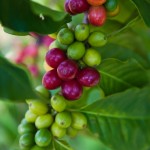Hawaii – First State to Ban Non-biodegradable Plastic Bags!
State-wide Ban of Non-Biodegradable plastic bags
In 2009, Kauai was the first county to pass a law banning non-biodegradable plastic bags at the checkout. The law went into effect on January 11, 2011.
In 2010, Maui County, which covers Maui, Lanai, and Molokai, passed a plastic bags ban law which went into effect on January 1, 2011.
In January, Hawaii County passed a no non-biodegradable plastic bags bill which goes into effect in January 2014.
On April 25, 2012, the Honolulu City Council approved a plan that will ban the distribution of both non-recyclable paper and non-biodegradable plastic bags from distribution at store and restaurant checkouts. All that awaits making Hawaii the first state to ban non-biodegradable plastic bags and non-recyclable paper trash is Mayor Carlisle’s signature, giving Honolulu businesses until July 15, 2015, to make the change.
Let’s hope he signs it and puts Hawaii in a leadership position for the rest of the country to follow.
UPDATE: On May 17, 2012, Honolulu Mayor Peter Carlisle signed the plastic-bag ban bill…the last Hawaii county to implement such a ban. On July 1, 2015, when the new law takes effect, Hawaii will become the first state to ban plastic bags at checkout counters .
New Habits Take Time
As with most change we try to incorporate into our daily lives, it will take an effort and a bit of time for consumers to make the adjustment from plastic to paper…or to use re-usable bags. There are a lot of folks who have purchased re-usable cloth bags, myself included, who just haven’t gotten into the habit of always taking it with them. It does very little good, sitting at home.
My kids have gotten into the habit of using it selectively. They have been using Target’s re-usable bags for a couple of years now simply because Target gives shoppers 5 cents off for each bag used. A simple little thing, but its enough to at least make my kids use their Target bags whenever they shop there!
I will admit, I re-use those non-biodegradable plastic bags frequently, but do get annoyed when I see how many end up as litter. Not only is it an eye-sore, but they also hurt wildlife, especially sea-life.
I no longer buy 6-packs, but for years, I got in the habit to cut up those plastic retainers so that sea-birds and turtles would not get caught in them. It took an extra 15-seconds or so to dispose of it with this added step versus just pitching it into the trash. There are a lot of little things we can do to help the environment and just as importantly, reduce litter.
Don’t stop there!
Do you have a favorite beach? hiking trail? picnic area? waterfall? Have you ever taken a moment to pick up and properly dispose of someone else’s trash that was left behind? Why not? I have picked up bags (yep, those non-biodegradable plastic bags) full of trash that thoughtless fishermen have left behind at my favorite fishing spots and taken them to the nearest trash can or landfill site.
Yes, it took a few minutes to do. But, it left the place looking a lot better than it did when I got there. Obviously, it would be better if people didn’t leave their trash behind in the first place! I have no control over that. What I do have control over is picking up and properly disposing of at least a little bit each time I go! So do you.
Recently, the City & County of Honolulu has eliminated picking up trash at some public beaches with private rights-of-ways. While this move will save the C & C of Honolulu about $700,000 annually, it also means those beaches and their access points will mostly likely become trash ridden within weeks. If only, we could get everyone to live responsibly and not litter…unfortunately, I don’t see that happening any time soon.
Hawaii’s leadership in banning non-biodegradable plastic bags is a step in the right direction.







